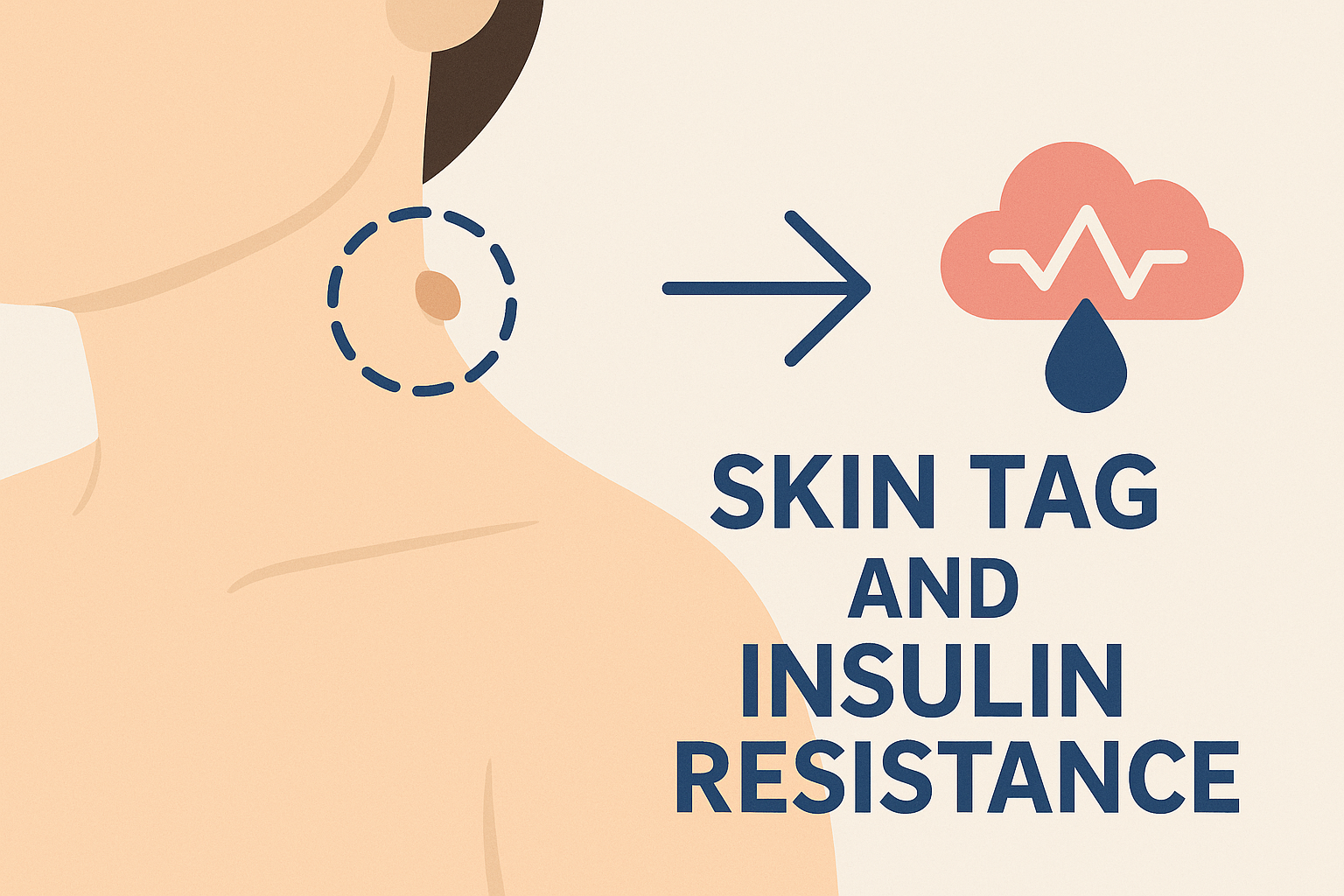Skin Tags: A Possible Warning Sign of Insulin Resistance

Skin Tags: A Possible Warning Sign of Insulin Resistance
Most people think of skin tags as harmless little growths—cosmetic nuisances that develop on the neck, underarms, or eyelids. While skin tags themselves are not dangerous, in functional medicine we recognize that they can sometimes serve as a warning sign of deeper metabolic issues. One of the most important connections is between skin tags and insulin resistance.
At Sheen Vein (Aesthetics and Functional Medicine) in St. Louis, we often see patients with clusters of skin tags who also struggle with fatigue, stubborn weight gain, or difficulty managing blood sugar. When we look closer, many of these patients show clear evidence of insulin resistance.
What Are Skin Tags?
Skin tags, medically known as acrochordons, are small, soft, benign growths that typically appear in areas of friction:
- Neck
- Armpits
- Groin
- Eyelids
- Under the breasts
They are not cancerous and often don’t cause symptoms beyond cosmetic concerns. However, multiple skin tags appearing over time—especially in combination with other symptoms—may point to an underlying metabolic problem.
The Link Between Skin Tags and Insulin Resistance
Insulin resistance occurs when the body’s cells no longer respond effectively to insulin, the hormone that helps move glucose (sugar) from the bloodstream into cells for energy. To compensate, the pancreas produces more insulin, leading to chronically elevated insulin levels (hyperinsulinemia).
High insulin has effects beyond blood sugar: it acts like a growth signal. Elevated insulin levels stimulate the skin and connective tissue, which can lead to the formation of skin tags.
Research shows that people with multiple skin tags often have:
- Higher fasting insulin levels
- Impaired glucose tolerance
- Increased waist circumference
- Greater risk of developing type 2 diabetes or metabolic syndrome
In other words, skin tags can be the body’s external clue to what’s happening internally.
Why This Connection Matters
Catching insulin resistance early is critical. Left unchecked, it can progress silently for years before showing up as type 2 diabetes, heart disease, or fatty liver disease. Unfortunately, many people dismiss skin tags as just a cosmetic concern and miss this opportunity for early intervention.
Some other subtle warning signs of insulin resistance include:
- Fatigue after meals
- Brain fog in the afternoon
- Stubborn abdominal fat
- Darkened, velvety patches of skin (acanthosis nigricans)
- Sugar cravings
If these symptoms are present along with skin tags, it’s worth exploring whether blood sugar and insulin metabolism are imbalanced.
Functional Medicine Approach in St. Louis
At Sheen Vein (Aesthetics and Functional Medicine), we look beyond the skin tag itself and focus on the whole person. Our evaluation for insulin resistance may include:
- Fasting glucose and insulin levels
- Hemoglobin A1c (average blood sugar over 3 months)
- HOMA-IR testing to directly assess insulin resistance
- Lipid panels to check cholesterol and triglycerides
- Body composition analysis to evaluate visceral fat
If insulin resistance is identified, we take a root-cause approach that may include:
- Nutrition counseling – emphasizing whole foods, low-glycemic choices, and balanced macronutrients
- Lifestyle interventions – exercise, stress reduction, and sleep optimization
- Targeted supplements such as magnesium, omega-3s, or berberine to support blood sugar balance (see our blog on why insulin resistance prevents weight loss)
- Advanced therapies – red light therapy and metabolic support strategies that improve cellular energy and mitochondrial function (learn more in our blog on mitochondrial dysfunction and chronic fatigue)
For patients concerned about the cosmetic aspect of skin tags, we also offer safe removal options. But the most important step is always addressing the underlying cause.
Skin Tags as an Opportunity for Prevention
Rather than viewing skin tags as a simple cosmetic issue, we should see them as a window into metabolic health. They may be your body’s way of saying: “Pay attention—something deeper is going on.”
By recognizing this link, patients can take steps to reverse insulin resistance before it develops into more serious conditions.
Takeaway
Skin tags may seem harmless, but when they appear in clusters, they can be a visible marker of insulin resistance. Addressing the root cause with a functional medicine approach can not only improve skin health but also protect long-term metabolic and cardiovascular health.
At Sheen Vein (Aesthetics and Functional Medicine) in St. Louis, we combine advanced testing, lifestyle strategies, and personalized treatment plans to help patients get to the root of insulin resistance and restore balance.